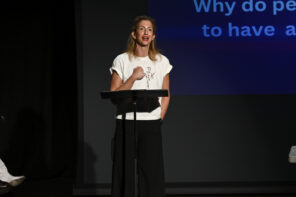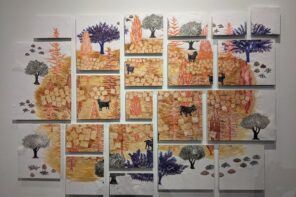Michael Chearney – ARTIST
Art is the voice within. The honesty we keep hidden, the tears we pause from falling, the hope we stifle, the romance we dream of, the soul food we crave. Art is healing. Art dignifies our pain, heals our loss, harnesses our uncertainty, glorifies our feelings, and shrouds us in understanding.
– Dawn Garcia
“Dress in old clothes.” The only direction I received when I was invited to join Michael Chearney in his art studio located in Downtown Los Angeles. Winter had approached and yet, as does often happen in Southern California, the sun decided it was going to encourage a little warmth and spring-like temperatures. Befitting once you see the colorful bursts spewed onto the once blank canvases now lining his single studio. It’s poetic, really. But before you head in, you are greeted with prose. You enter an alleyway lined with bricks and rustic tables, Edison bulbs streaming overhead, the sound of conversation and idle laptops, fingers tap-tap-tapping now flooding your senses at entry. The freshly brewed espressos permeate through the open cracks in the cafe door nearby. But there, standing outside wearing an unmistakable smile is Michael. Shorts, tee, tennis shoes, and paint splattered over each piece of clothing. Unapologetic, he hugs me and says, “I might still have some wet paint somewhere on me.” I hug him back and think, “I don’t mind, it’s ART!”
The very first time I met Artist, Michael Chearney was at an APLA Event in Los Angeles. A Fundraiser with some of the best Broadway performers in the biz and a silent auction to raise money in support of AIDS Project Los Angeles. I saw his painting, beautiful and joyous with a resin overlay and somehow I felt love. And I wanted to meet him! And as my daughter clasped onto my finger, I looked up to see two men descending the spiral staircase in the lobby of the Saban Theatre. Mike and Brian were coming down and somehow, I just knew he was the artist. Beaming with a life within that exuded through his smile, my daughter and I introduced ourselves to him and his husband, Brian and thus began my introduction to his work.
The world of art that is created by Michael is not the merely kind of work that you hang on a wall and admire. It is the kind of art that breathes life into you and every day, it’s emotion tethers itself around you like vapors of healing. Much like his freedom as a child to color outside of the lines, he has reinvented a movement that allows art to be profoundly instructive and generously warm. His work, even the earlier work where the contrast of color and feeling conveyed a lost sense of self, there was always a restorative practicum applied unconsciously. As his paintings evolve, so does the emotion transmitted through them. As if a vessel of creativity, the multiple layers and colorful facets that glide in between shades and textures breathe a sense of purpose into the final pieces.
After the visit to his studio where paint flowed like words pouring from the tip of a pen, I realized with certainty that what Michael is creating is art that will forever impact the world as a whole. His work is life altering. It is not only beautiful and tangible but abundant in energy and passion which is something this world is so hungry for and every art savant longs for. Couple that with his insatiable desire to paint every moment of just about any day with total devotion to continually grow as an artist and what you have is a compelling man making a lifelong musing in not only the art community but the entire scope of creativity.
Mike’s work has been recognized and supported by some of the most prestigious in the Art World including: Art Historian – Calvin Goodman, Peter Fehler – Publisher of ART LTD. Magazine, LACMA Modern Art Council Members – William Escalera and Penny Haberman, Arts Writer – Peter Frank, as well as exclusive Private Collectors.
Please enjoy one of the most telling interviews yet that I have had the privilege to share with all of you … Meet – MICHAEL CHEARNEY.
ATOD – DAWN GARCIA – (DG): Life is fluid and alive. What is the most vivid moment you remember growing up of something you experienced that you felt compelled to paint?
MC: When we played with crayons and coloring books, my grandfather always drew outside the lines, way outside the lines and never colored anything “right.” He was a fireman and I can remember him taking me to the firehouse and putting me way up on the back ladder of the fire engine and then he would slide down the pole past me. This was thrilling, as were our many side trips to movies, and strip clubs, and Baltimore bars. My grandfather had no fear, and he conveyed that to me. He certainly played outside the lines. With my father away serving in the Marines when I was born, my grandfather and I forged a strong bond.
He died in a fire of a heart attack when I was nine or ten. I was devastated and unable to express how I felt. I was not allowed to go to the funeral, cry, or express grief. This was my first experience with death and judging from my mother and father’s reactions it was a horrible thing. My feelings for my grandfather are evident In the painting Fire Man, the bold black brush strokes suggest a face, and at the same time, suggest a heart pierced by an arrow. I completed the work by plunging my handprint into the painting’s “burning” canvas. This was the first painting I felt compelled to do, as I began my second career as a fine artist. Until this painting, I had never truly grieved his loss. One day, I went into my home studio and put on the song “Every Day A Little Death” from the Sondheim musical “A Little Night Music”. I hit the repeat button and shut the door. “Every Day a Little Death” played for five or six hours, over and over again. I almost never cry but tears streamed down my face as I completed the painting in one session. It was one of the most intense creative experiences I have ever had. I so loved that man. And he loved me. The painting is owned by a close friend and was one of my first sales.
ATOD – DAWN GARCIA – (DG): As a Creative Director, did you ever find the artist in you to be confined or did it breed the freedom to push the boundaries?
MC: The answer would be yes and yes. Advertising is a great teacher. You learn to be very focused in your creative work and very clean in conveying a sales message.
This confinement sharpens your ability as an artist. It gives you the financing and opportunity to dream big and execute those dreams. Your work is seen worldwide. This exposure really feeds your creative ego. At the same, you are working with a client’s money and subject to their approvals and the approvals of your agency account managers. It is working by committee. You are not making art for art’s sake, you are making a commercial. Can you imagine discussing a Barbie Doll’s motivation for turning her head to the left instead of the right? That is confining for an artist who relies on spontaneity and freedom to create and all too typical in advertising. Many artists are trapped by the allure of steady employment and creative opportunity but ultimately left unfulfilled in the advertising world. This was absolutely the case for me. Advertising is full of Mad Men (what a realistic show!), and I was trapped inside this crazy people box! While I was always “handled,” I was recognized in advertising for my ability to push the boundaries and able to pioneer new directions and technologies in my work. For example, I did the first computer generated commercial for Prudential with Academy Award winning special effects director Jim Rygiel of Lord of the Rings fame and sold Prudential on using the first female voice for a major national advertiser, Colleen Dewhurst. She joined James Earl Jones. Sometimes I went too far, like when I had a goddess walking on water and carrying Crisco Oil Light in a commercial. Thank God, I did a safe version. Advertising manages creative spirits and I was honored to mentor many as a Creative Director. It does not set them free. They do. Despite its benefits, I tell anyone considering a creative career in advertising to do whatever they can to find a more personal outlet for their art or writing. I think often we find employment that mirror our early childhood family dynamics and advertising is a very dysfunctional family. The starving artist mentality must end and children encouraged to create and thrive as artists must be reinvigorated. When I returned to painting, I returned to those early years of creativity with my grandparents and my true self. Painting is the purest form of creativity I have experienced. There are no mad men between you and the canvas, no scripts to sell, or casts to direct.
DG: As a child, what was your first true recollection of seeing the world as a canvas?
MC: The white sand burned my feet as a ran across its fine grains to the crashing surf of Ocean City, Maryland. I was about five or six years old. My family packed the black Chevy Impala to the gills and we were off for a week at the beach. We stayed in the old section of town, the heart of the amusement district at an old rundown plantation style apartment/house. It was a mix of Baltimore John Waters and Tennessee Williams. My eyes were wide with wonder at the colors, the life and the immense canvas of the beach and the Ocean and the Boardwalk. It was the only place my overprotective parents felt comfortable letting me explore life and my self. Ocean City, Maryland was full of life. I could sense the energy of the earth, the air, the water, and the fire of our being even then, our collective being. Even the classic amusement rides had life for me then. I talked to all of them. They remain preserved in their original condition to this day. I was very moved by this ever changing canvas and I had to be dragged from its borders. Each time I left the Ocean and headed back to Baltimore I sang the lyrics from South Pacific. I continued to sing these words to the beach every Summer of my life until I found true love, my special island ten years ago. Even at six, I knew life was impermanent watching the changing tides. Now I know art captures the moment and it lives forever. As a child, I scooped sand up from the beach each time I walked on it. It would leak through my fingers and I would repeat, “like sands in an hourglass so are the days of our lives.” As an adult, the ocean and the sand remain one of my favorite canvases and I go to the beach at least once a week as a sacred journey.
DG: Tell me a word that makes you feel liberated?
MC: The word “light” makes me feel liberated. I have been told that “light” is the first word I ever spoke. Light shows the way. Light lifts the spirit. When I feel my spirits low I remember darkness cannot triumph over darkness, only light can. I let in the light. Light is not heavy and it travels with God’s speed. Sunlight feeds my soul. I much prefer daytime to nighttime. I appreciate the dark and strive to live in the light. It feels better. I visualize the light in everyone and in everything and imagine it expanding and carrying healing love. Strangely, for a person who considers themselves brave, I still find myself afraid of the dark. I am reminded of this every time I visit the Haunted Mansion at Disneyland and the lights go out in the vestibule. Where is that ball of white light?
DG: What do you feel has been your greatest challenge as an artist?
MC: I think leaving behind the structure, human interaction, and security of a conventional job has been my greatest challenge. Painting is such a personal process and is totally self motivated. The studio draws you in and holds you there. I consciously take steps now to be out with people.
DG: The first painting you saw that changed your life.
MC: Lincoln Center. The Met. Age 13 with my parents and sister. The Chagall paintings. 36 x 30 feet. The Triumph of Music. The Sources of Music. Somehow my high school graduate parents knew I needed to go to New York City even though they had never been. I was blown away by Lincoln Center. These iconic paintings towered over the plaza like Gods. The energy of the color was uplifting. The lighting at night wondrous, magical, deeply moving. As I write this I realize these paintings reflected my joy of coloring as a child, they were giant coloring books come to life with joy, spirituality, and deep themes of good over evil, light over dark, and life outside the lines. An intentional celebration of life as art. I knew that then and feel the same way now. These were symbolic archetypal works. The energy of life. The expression of the soul. Chagall was the first famous painter I adored and understood and Picasso followed quickly. Somehow the way he saw things was the way they really were, the way they really felt.
DG: You started painting at the age of two – with that kind of freedom to explore, at what point did you know what you were meant to do?
MC: The freedom to explore was cut off at the age of three when my parents moved to the Baltimore suburbs and I was no longer living with my artistic mentors, my paternal grandparents. My mother appreciated painting by numbers and the great Masters. While I attempted to produce this kind of work for her I could not stay in the lines. She never hung one of my velvet paint by numbers pieces. In our new home, my father and mother both wanted me to paint only in our cement basement. It had no light. When I disobeyed and painted a model in my bedroom my father went into a rage. Just back from a stint in the Marines, I now believe he lost control of himself and could have killed me. After much therapy I now realize I associated painting with death at that time and did not paint again or think of painting for decades. I turned to more conventional creative outlets like writing, directing and eventually advertising. I continued to push the boundaries of my work but never found that creative freedom on Madison Ave. As I said earlier, advertising had the same dysfunctional structure as my early childhood. Interesting that my younger sister became a realistic painter as a child and I, a writer. In adult life, my sister became a poet and I, a painter. One day in 1998, as an Advertising Creative Director, I just found myself buying paint and canvases at The Art Store on Beverly Blvd. and my life changed. I did not know what I was meant to do until this year. Now I feel all my life experience have come full circle to that early freedom and to painting and art and its healing and transformative power. I believe we choose our families and our lessons and I draw on all my experience with love and gratitude and forgiveness.
DG: Every artist has some trauma occur that becomes the pivotal moment of clarity and somehow the creative process takes on a new life. What was that trauma for you?
MC: In 2007, I was went to take some standard medical tests. I was extremely fit and regularly would set the record on the stress test running machines. This time, the unthinkable, a possible rare heart virus was weakening my heart muscle. While the diagnosis was not perfectly clear, the evidence was very serious and alarming. I was so upset, my sister referred me to Trudy Goodman who runs the mindfulness meditation center InsightLA in Santa Monica. While Trudy was not available to counsel me, I began a medically validated Mindfulness Based Stress Reduction program there with my now good friend Christiane Wolfe. I recovered completely but I was never the same. Neither was my art. Meditation opened up a completely new level of awareness and being to me. I meditate before every painting session and let the work flow from that and through me.
DG: Your latest project, “Cloth to Canvas”, it seems that is a very beautiful way of showing that art exists ineverything. What sparked the concept and how do you feel it transcends your vision?
MC: Being a very physical painter, my clothes and body spontaneously and unintentionally become art works in the process. When attending a Clippers game at Staples Center, I can not walk 10 steps without being asked where to buy my painted work shoes. People wearing art channeled through me can be touched by it. It’s obvious from their reactions. Many people who would never walk into a gallery or buy a canvas would buy painted shoes or jeans. For some reason, I believe they can see art better on clothing than on canvas. Maybe they are more easily able to transcend societal conditioning on what art is in a gallery or museum. I spent 2009 working on mass market opportunities to expand this vision, with presentations in New York to major buyers like Barney’s and Bloomingdales. The project did not reach fruition on the mass market level and I returned to the canvas and fine art. Only now am I opening again to this expansion of my work. This time I am doing this painted clothing project on a personal client by client basis and seeing where that leads. While the painted clothing and objects are exciting extensions of my work, my true passion in 2013 and beyond is creating energetic transmitters. I recently distributed 25 squares from a multiple canvas piece to some of the greatest healers, thinkers, and creative minds I know from doctors of alternative medicine to my housekeeper. These canvases, while no longer part of the original “whole” painting, still retain their integrity and connect all of these people in a powerful and energetic manner. Now I am pursuing a large scale version of this test at A Place Called Home, a wonderful charity for youth in South Central Los Angeles. It is my vision to have the entire A Place Called Home community paint a 100 multi-canvas work together with me. Then each child, each teacher, each volunteer would take a piece of the “whole” canvas home. For most there, this would be their first exposure to the power of abstract art in their day to day life. The central canvas of this piece would remain at A Place Called Home connecting all the painters and all the people of the community with their homes and family. My dream is to expand this process and create large public works that transmit high energetic vibrations to cities, countries and the world, a grid of high energetic art satellites. I believe art affects people whether they consciously are aware of its power or not. If a thousand people at a rock concert were wearing hand painted Chearney T shirts, that would be something. When they left with them, they would still all be together with me.
DG: Your guilty pleasure(s).
MC: All my healers are good at instilling guilt about my diet. Coffee. Vodka (preferably perfectly chilled in a great martini glass). Fries (double cooked Belgian). Four Cheese Pizza. Los Feliz’s Mexico City’s Quesadillas and Carmen’s Original Nachos at El Cholo! They are all heaven on earth. At least to me, if not to my guides.
DG: A book you read over and over.
MC: I am an audible.com junkie. I listen to audio books over and over, mostly when I am working out. A few of the ones on my playlist that I have listened to at least 3 times this year are: The Age of Miracles -Marianne Williamson, The Soul of Leadership – Deepak Chopra, Radical Manifestation – Colin Tipping, Advanced Energy – Caroline Mys, The Astonishing Power of The Emotions – Esther Hicks, A Path With Heart – Jack Kornfield, The Art of Presence – Eckhart Tolle, Unleashing Your Psychic Potential – John Edward, Becoming Enlightened – The Dalai Lama, Connecting With Your Angels – Dr. Doreen Virtue, Exploring Vibration – Richard Gerber, Frequency – Penny Pierce, Full Catastrophe Living – Jon Kabet-Zin, The Healing Code – Alexander Loyd, Instant Healing – Dr. Serge Kahili King, Reiki Relaxation – Browen Steine
DG: First movie you ever saw.
MC: The first movie I ever saw, that would be Bambi. Those big eyes, and that pure innocence resonates still. I remember being blown away by the color and size of the images on screen. Coming from a downtown Baltimore row house, the natural forest and images were different yet so familiar. All the animals seemed so spiritually connected. I belonged with them. The forest was alive. It was like one of my coloring books come to life. My paternal grandparents were huge influences in my art history. Until the age of three, I had lived with them and aunts and uncles and we were always making art and coloring. It was one big John Waters family house. My father was serving in Marines during the Korean War. When he returned, my parents moved away to the Baltimore suburbs and I was distraught and alone. These feelings of separation were very clear to me as a three year-old and powerfully echoed in Bambi, and I knew it. The loss of the mother was devastating … and to a fire.
DG: I met you at an APLA Event with your husband, Brian. That moment of meeting you with my daughter had a truly profound impact on me. We talked about marriage equality and art and love and life all in a span of a few minutes. If there is one sentence to describe the moment you and Brian said “I Do” what would it be?
MC: This energy surged up from the floor and swept through my whole body as tears came to my eyes and I realized Brian and I were one in the eyes of each other, God, and the World.
I want to give my immense gratitude to Michael for coloring outside of the lines so that each of us are encouraged to do the same. You are light and love in every way and your soul transcends through your brushes. You are an inspiration and a vessel of wonderment.
For those of you in the Los Angeles are, Michael has a BRAND NEW Exhibition this coming Saturday, January 11th. Below are the details:
The George Billis Gallery PRESENTS Artist, Michael Chearney

Be on the lookout for more Exhibitions across the country and soon, across the globe. To those of you seeing his work for the first time, enjoy every pulse of it:
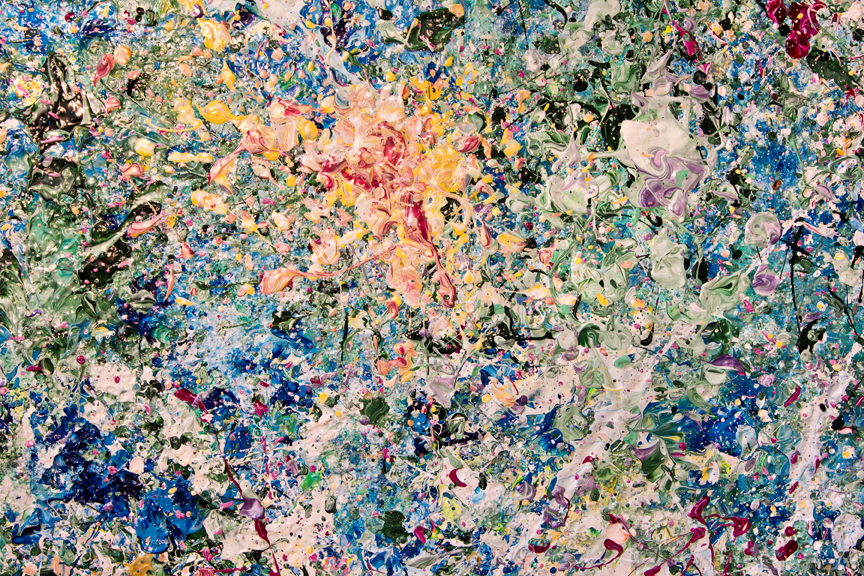
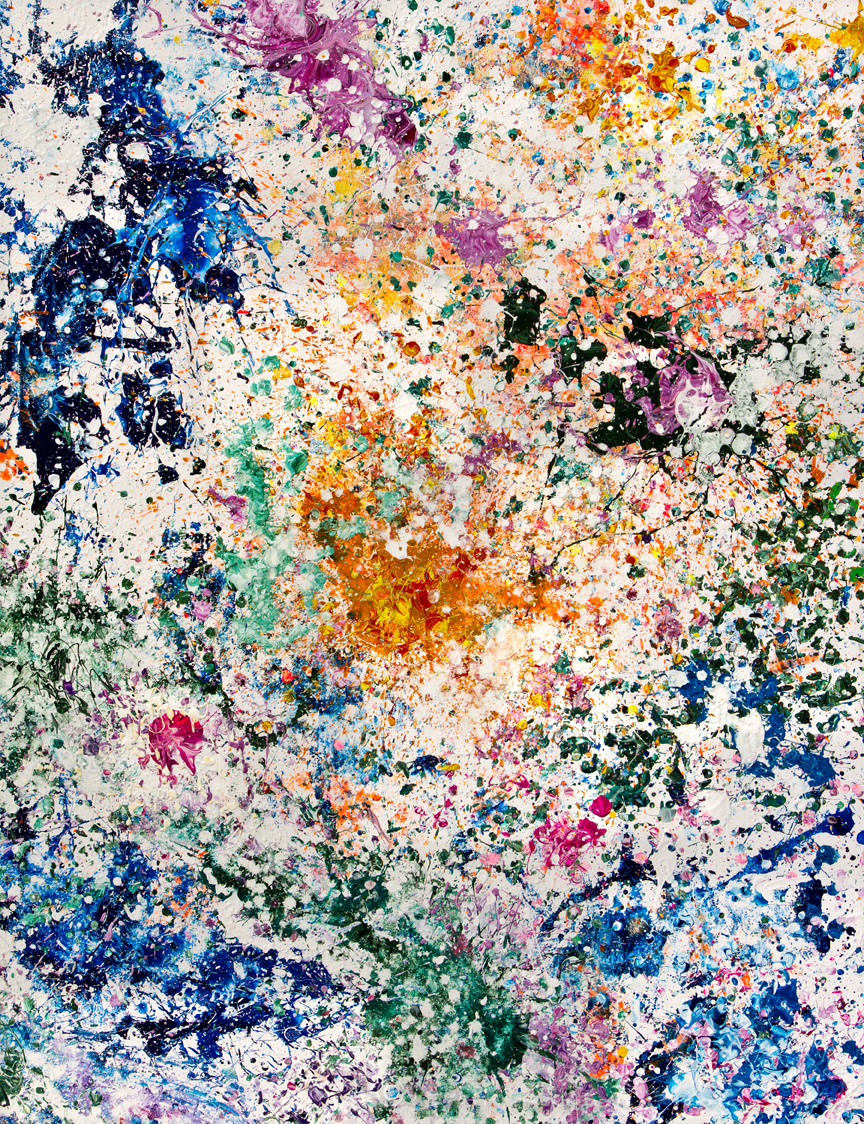

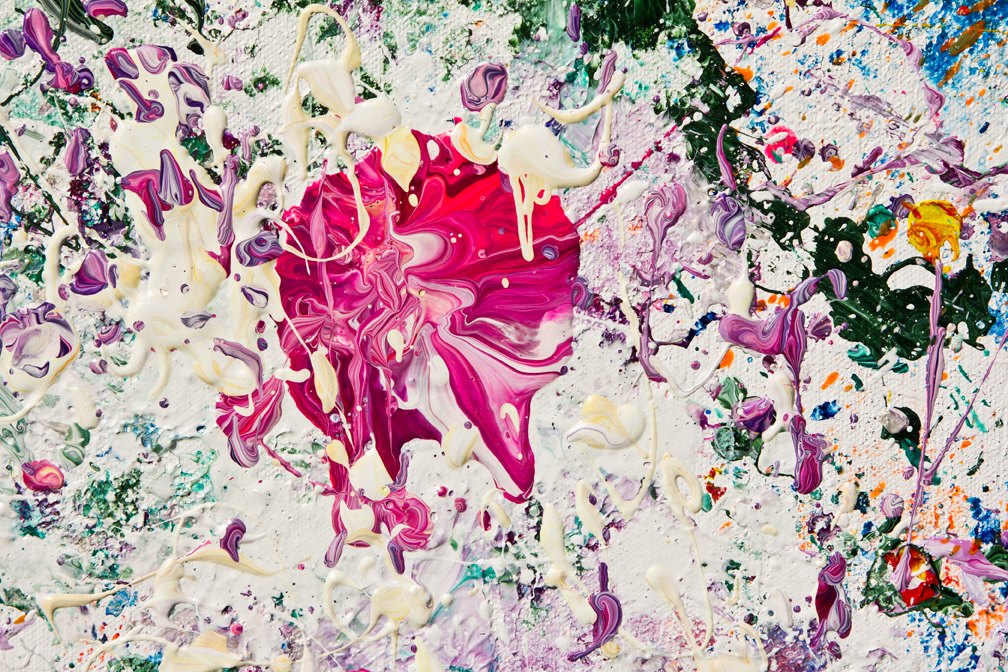
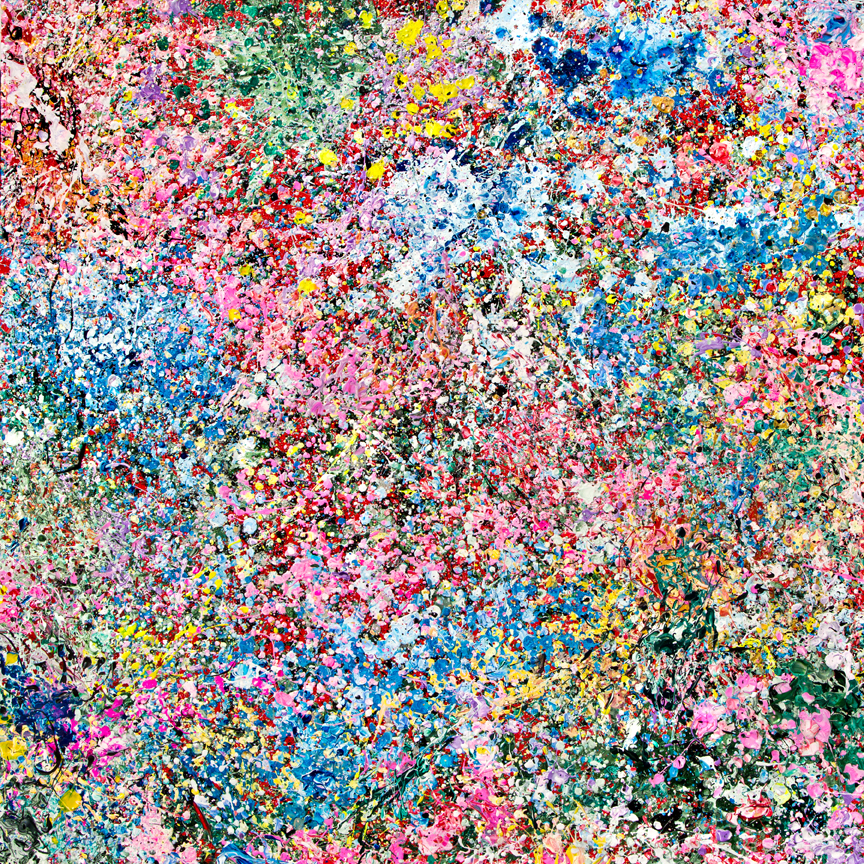

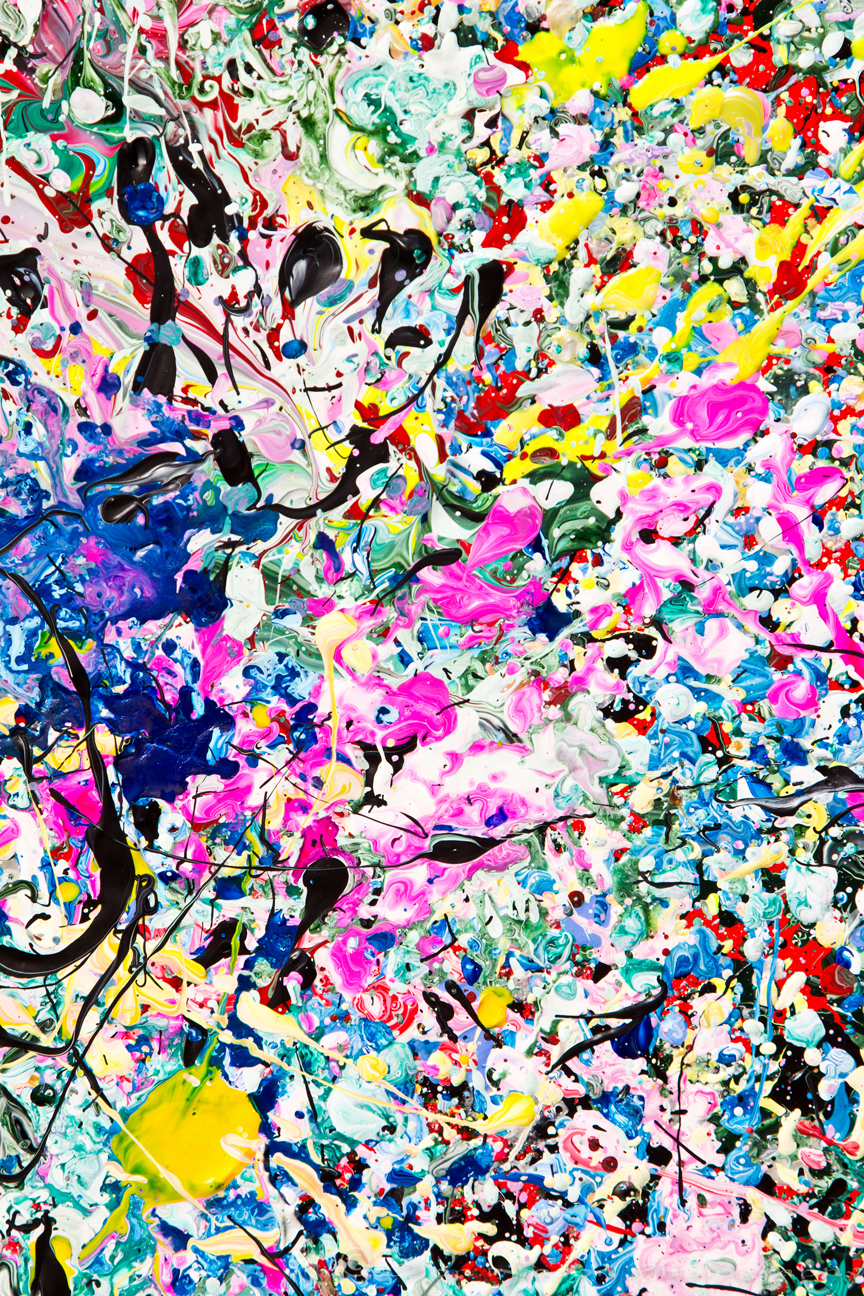
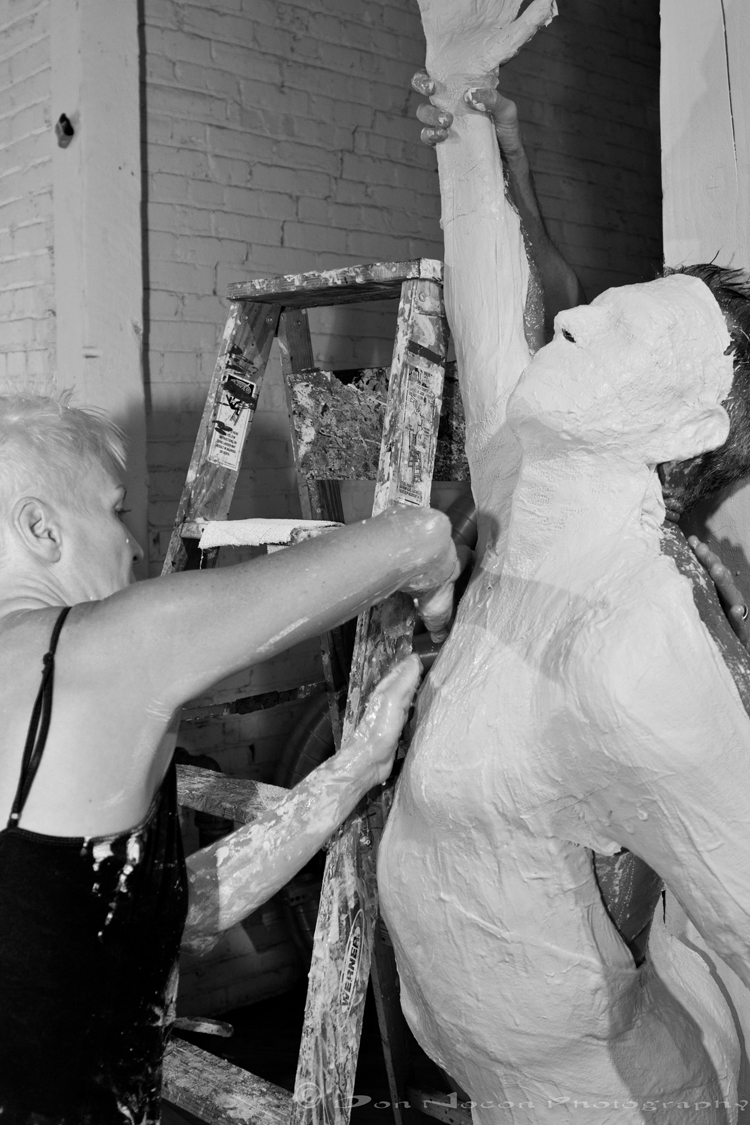

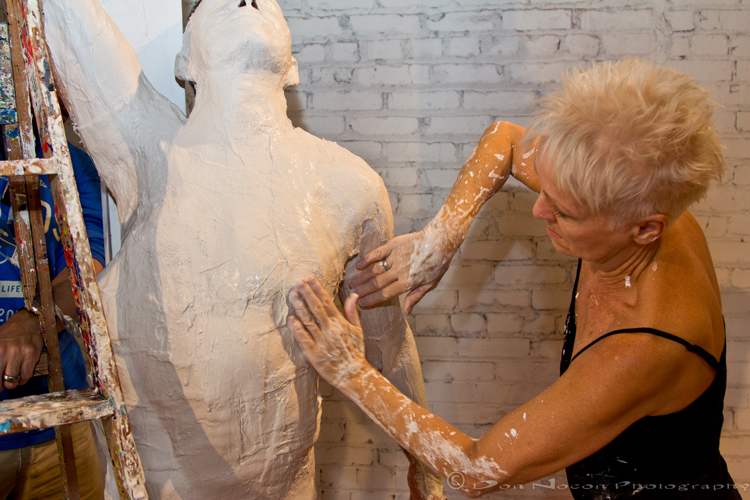

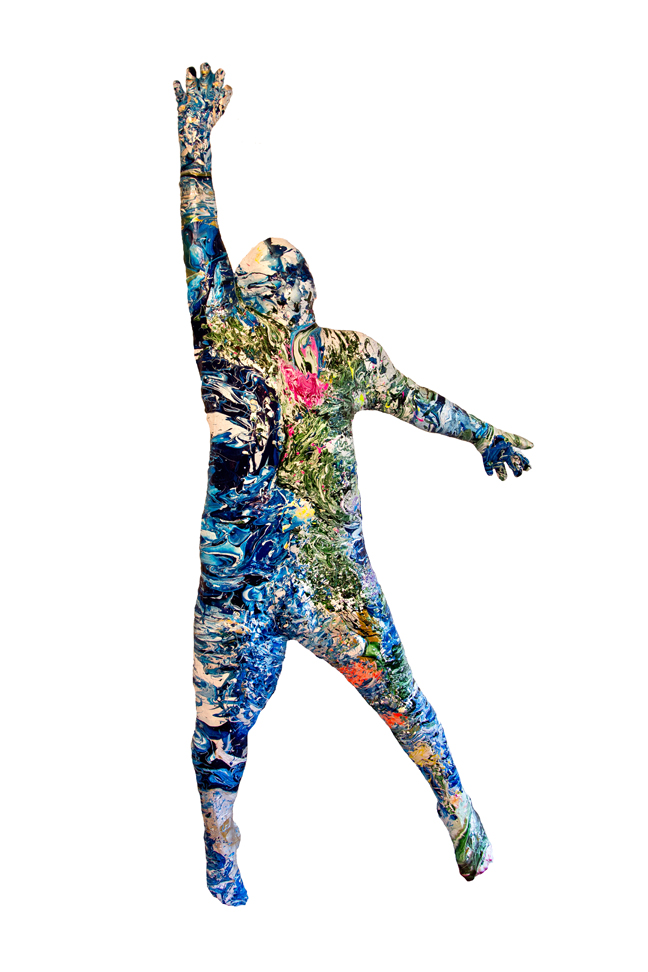
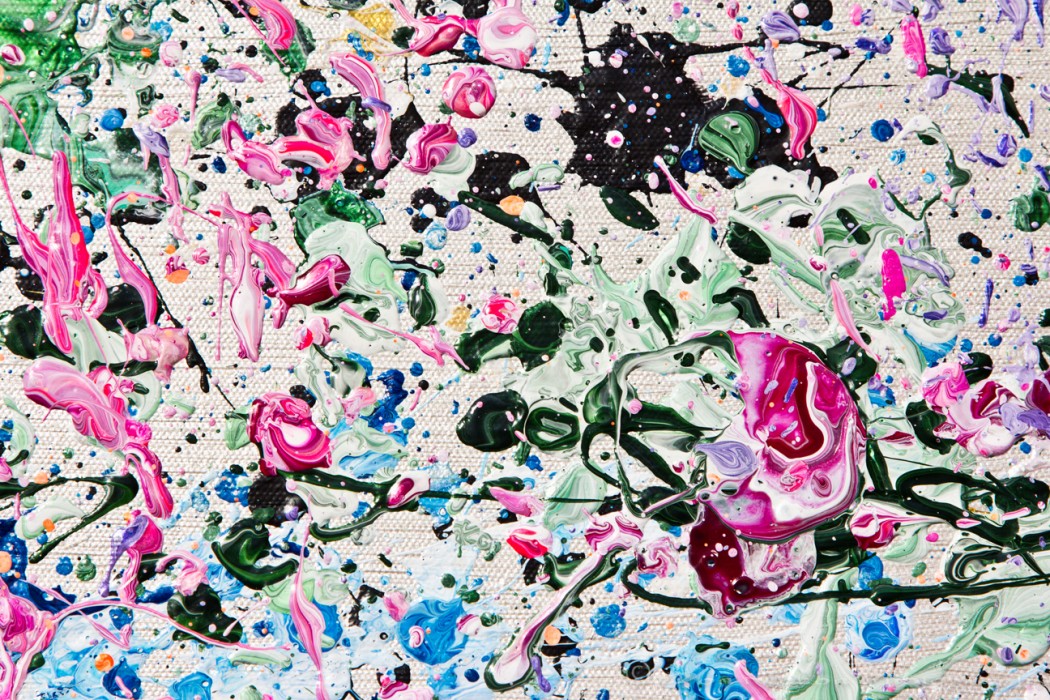
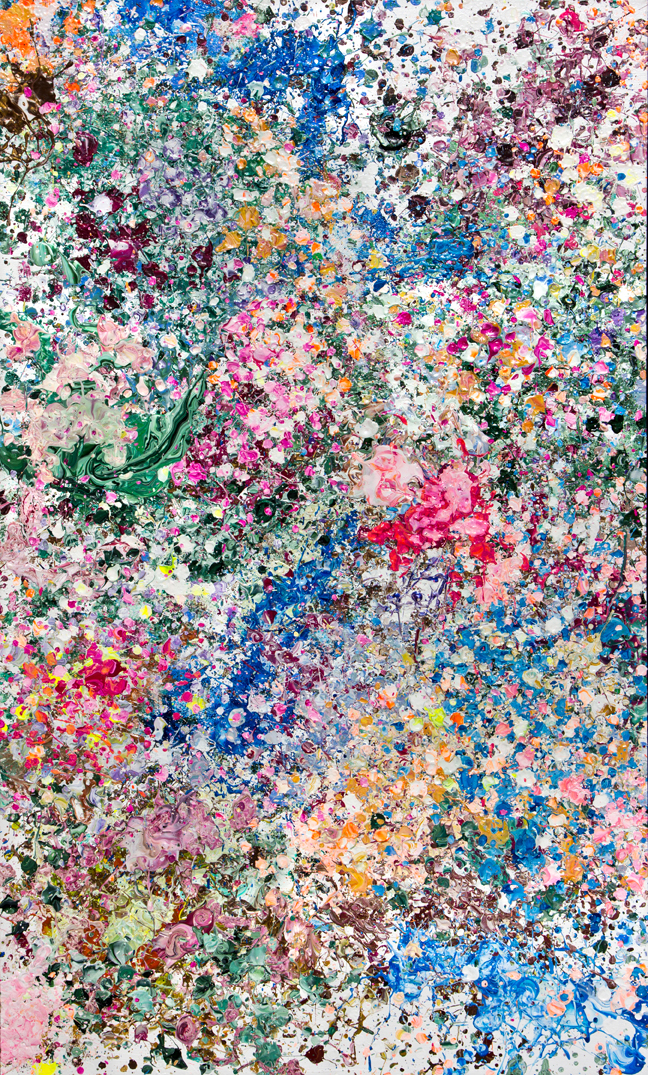


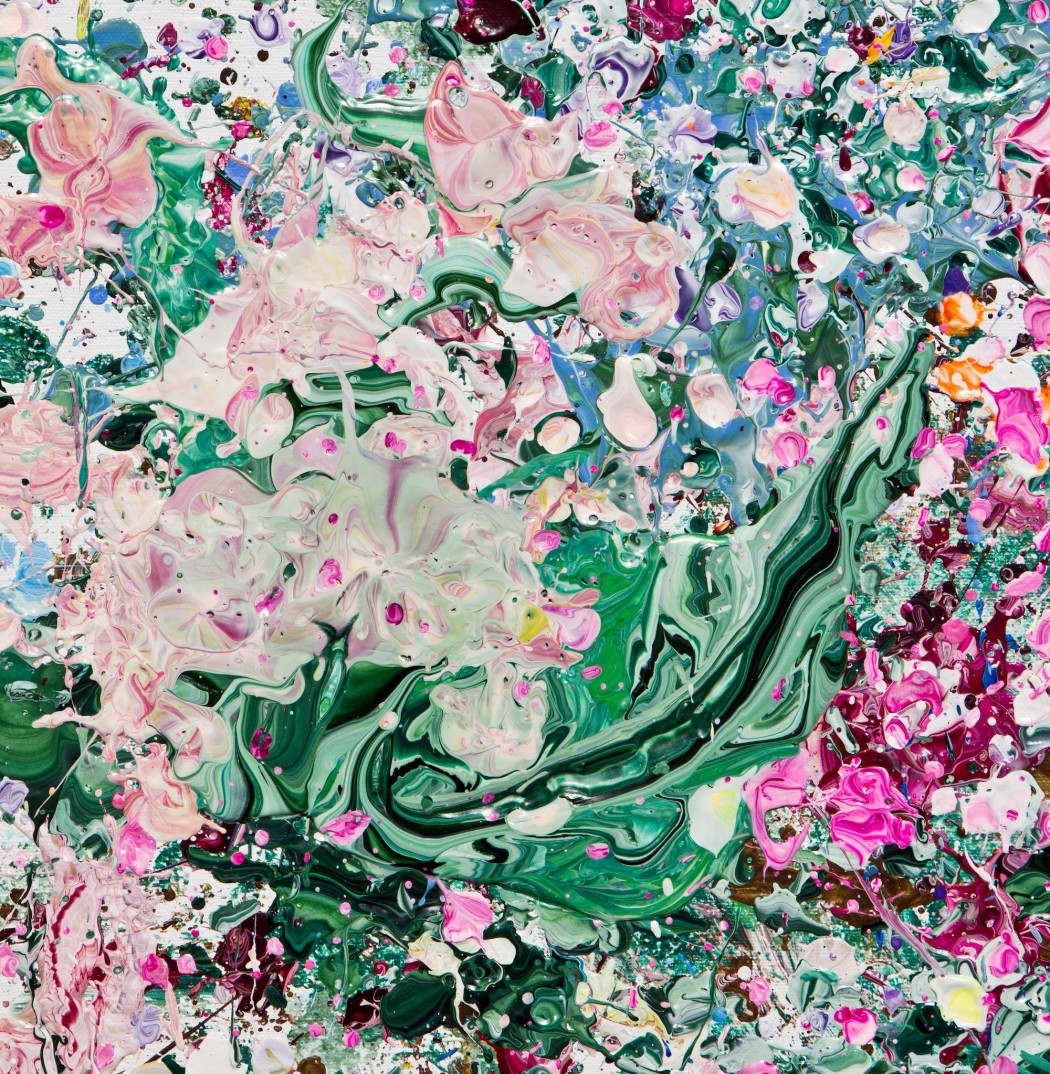

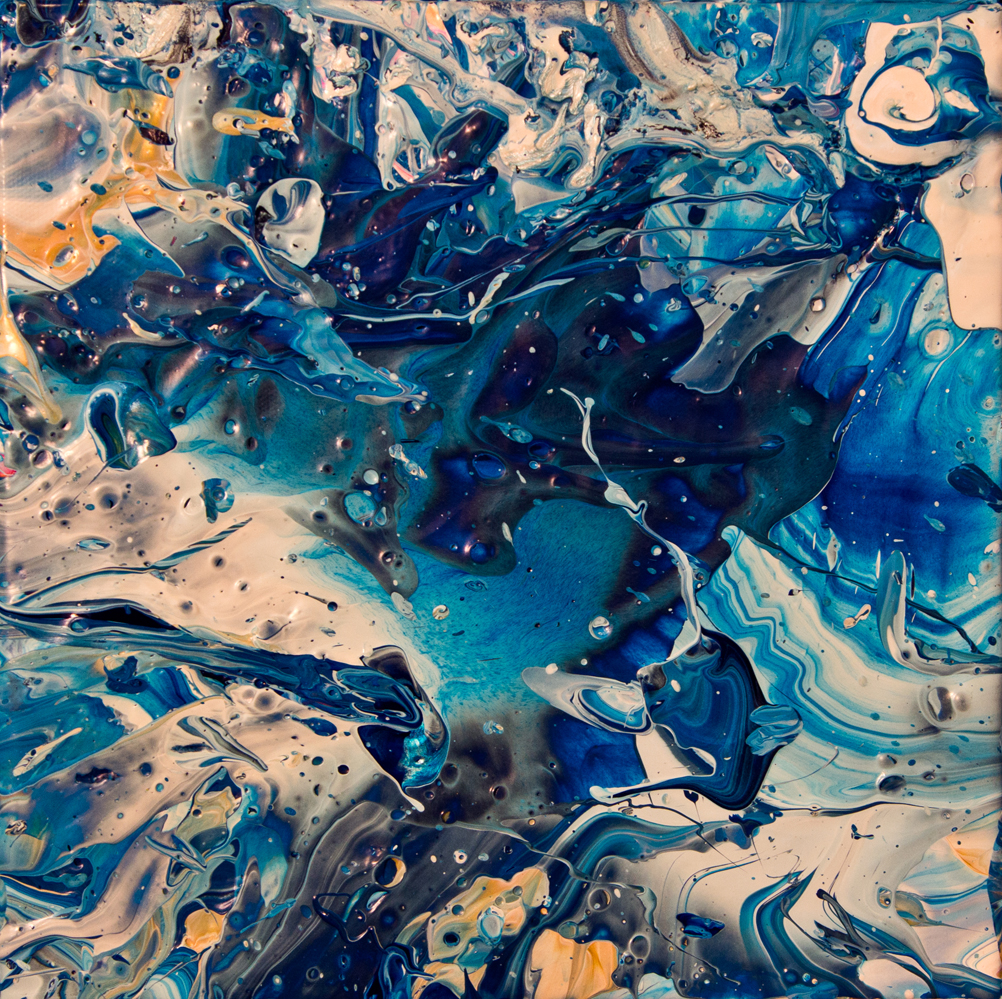
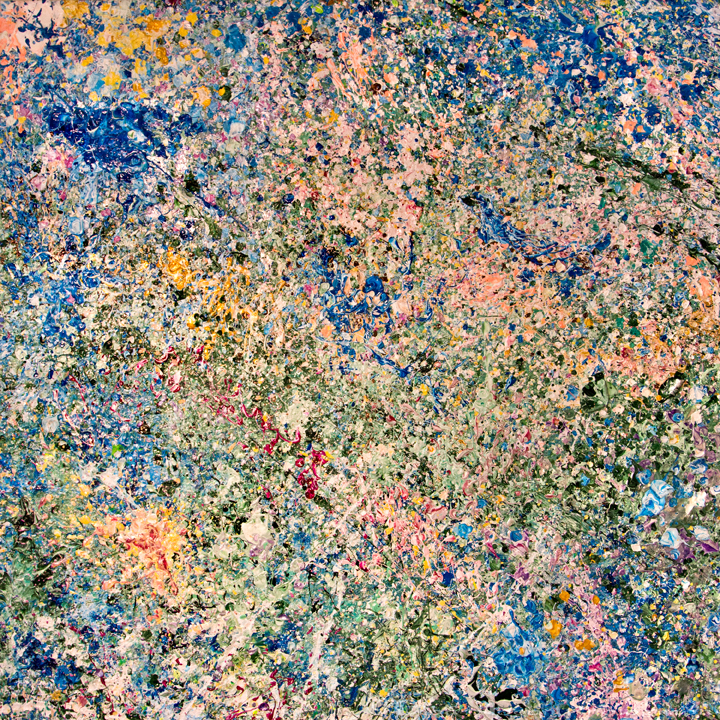
In the works:
Two charity projects that are underway.
A PLACE CALLED HOME. A large multi canvas large scale piece this summer where the kids and teachers and staff create the painting with me and then take a piece of it home. The main center piece staying at A PLACE CALLED HOME and connecting them all with HOME.
Also a multi-canvas work with the same theme for a Human Rights Campaign event in February in the arts district. HRC.
To read more about Michael’s accomplishments …
Michael Chearney (www.chearney.com) is a native of Baltimore and is a self-taught painter. Selected exhibitions from this past year include Red Dot Miami, the Palm Springs Fine Art Show and INCOGNITO 2013 at the Santa Monica Museum of Art. In January 2014, Chearney will have his second solo show at the George Billis Gallery in Los Angeles. He has shown nationwide in group exhibitions in New York, Chicago, Los Angeles and Miami. His works are held in corporate and personal collections internationally. He paints at his studio in the downtown Los Angeles Arts District and lives in Hollywood.
This interview has been inspired by:
Follow ATOD Magazine™



